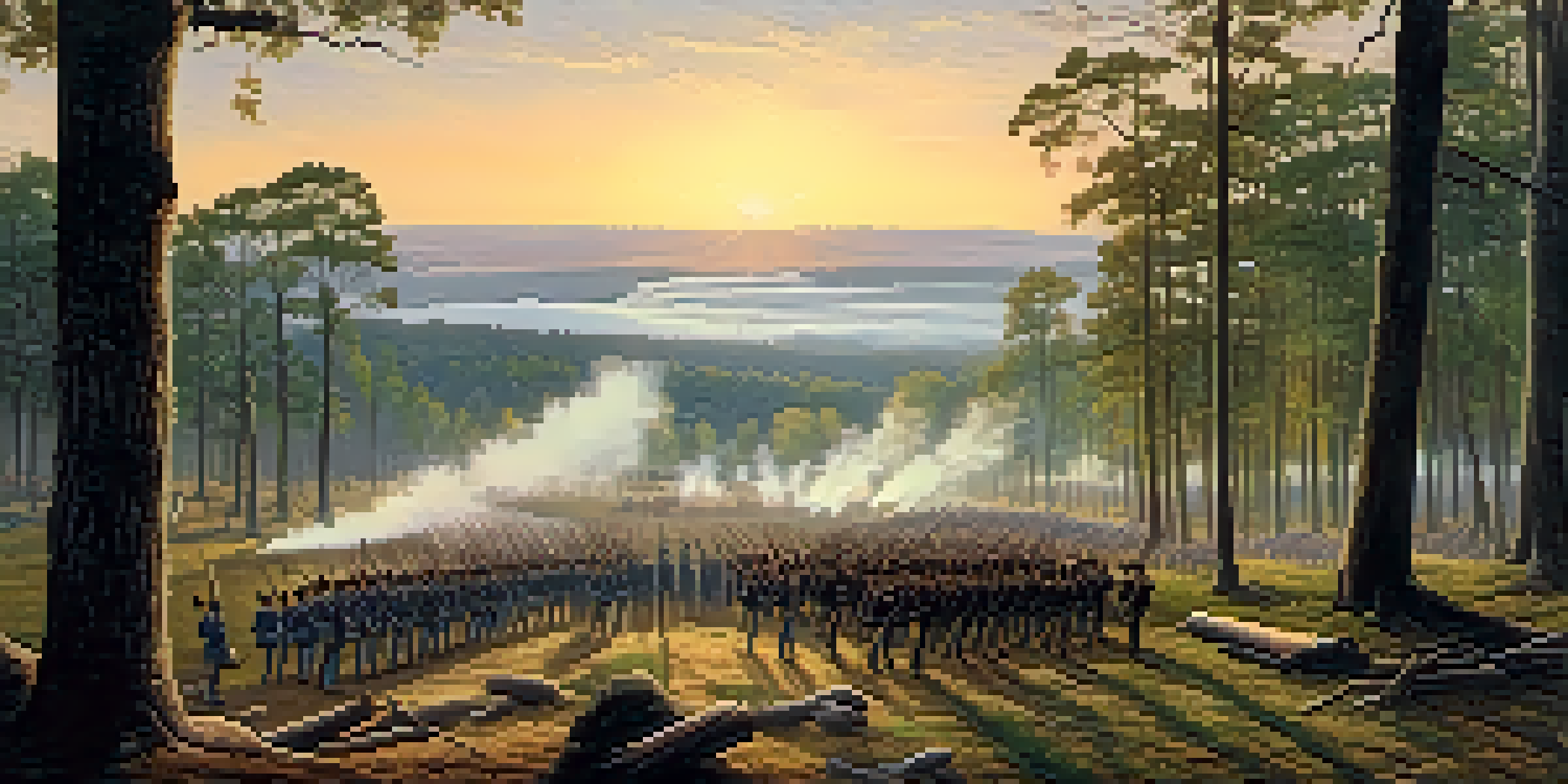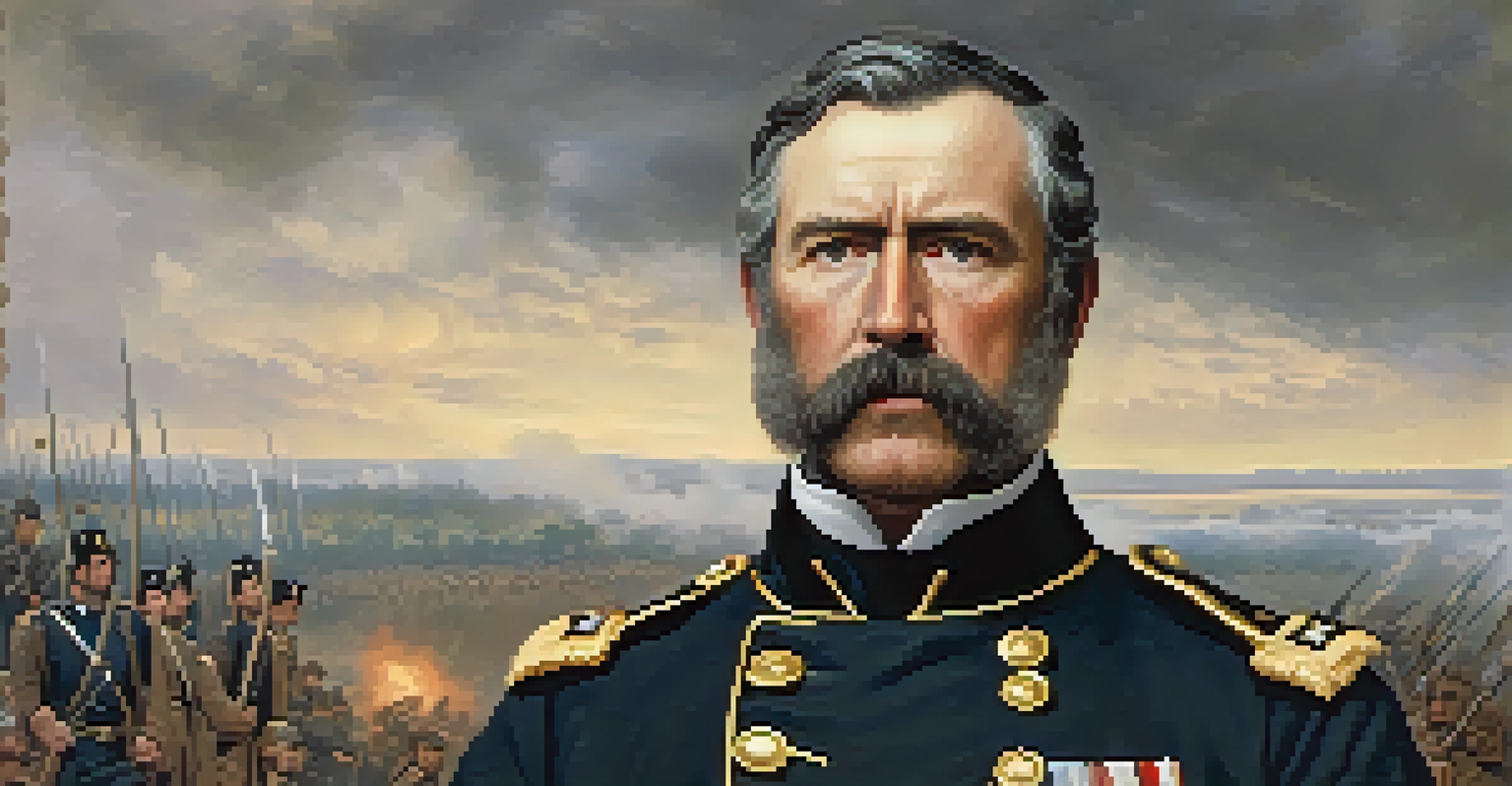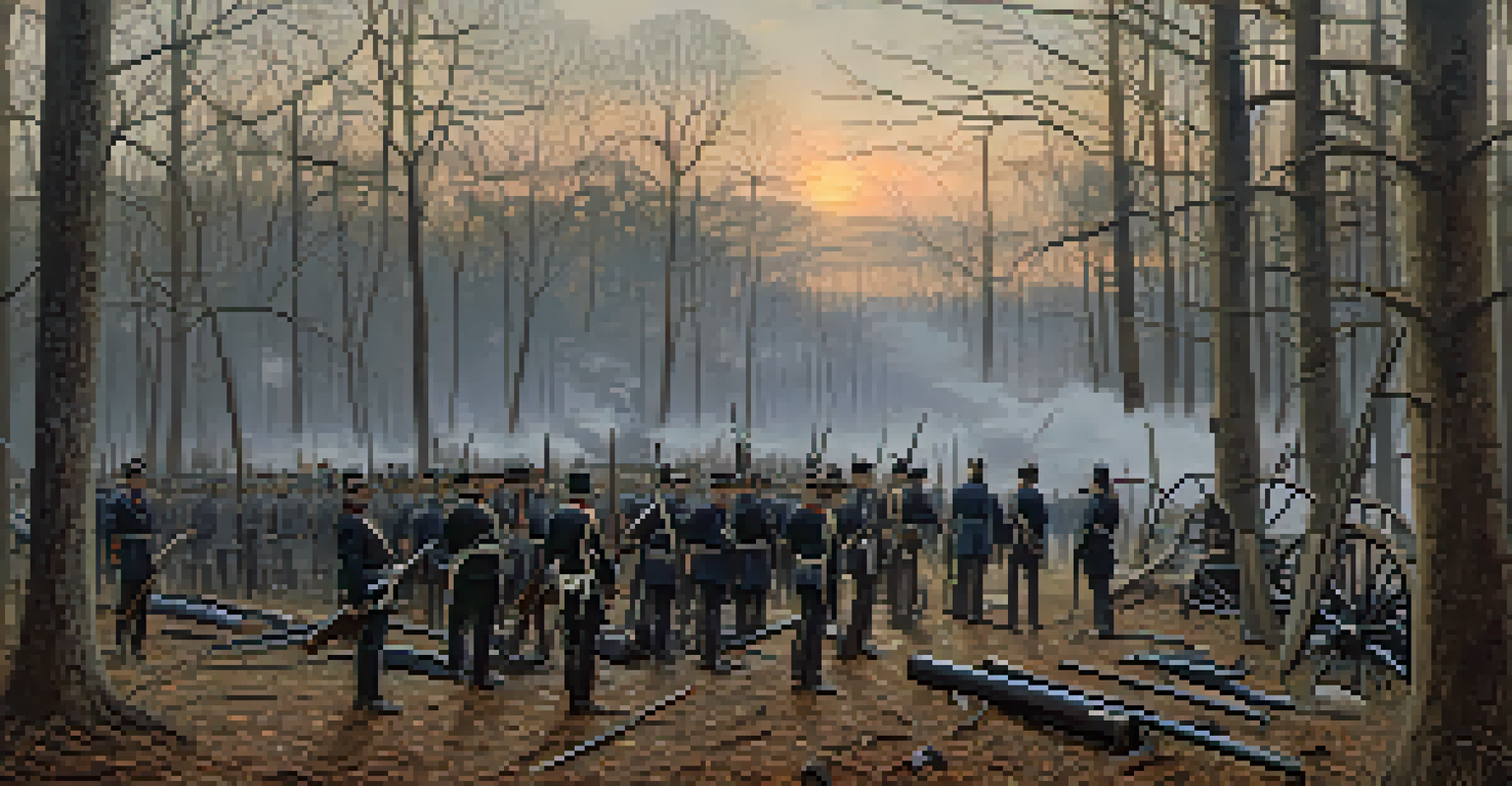The Battle of Chickamauga: A Landmark of Valor

Overview of the Battle of Chickamauga
The Battle of Chickamauga, fought in September 1863, was a significant encounter during the American Civil War. Located in northwestern Georgia, it marked the second bloodiest battle of the war. This clash saw the Confederate Army of Tennessee, commanded by General Braxton Bragg, face off against the Union Army of the Cumberland, led by General William Rosecrans. The battle's outcome not only influenced military strategies but also had profound implications for the morale of both sides.
War is cruelty, and youCannot refine it.
Chickamauga's terrain played a crucial role in the battle's unfolding. With dense woods and hills, it provided both opportunities and challenges for the troops. Soldiers had to adapt quickly to their surroundings, making tactical decisions that would determine the fate of their respective armies. The unique landscape turned the battlefield into a chaotic scene of valor and desperation.
The significance of the Battle of Chickamauga can't be overstated. It was a turning point that bolstered Confederate morale while simultaneously challenging the Union's advance into the South. The lessons learned here would resonate throughout the remainder of the war, shaping strategies and leadership decisions in the months that followed.
Key Figures in the Battle
Several prominent leaders emerged during the Battle of Chickamauga, each leaving a lasting legacy. General William Rosecrans, the Union commander, was known for his aggressive tactics, which initially gave him an advantage. However, his decisions during the battle would later be scrutinized, especially his failure to regroup his forces effectively. His counterpart, General Braxton Bragg, although often criticized, demonstrated strategic prowess that led to a significant Confederate victory.

Another noteworthy figure was Confederate General James Longstreet, who played a vital role in the battle. His tactical decisions and fierce leadership helped to rally the Confederate troops at critical moments. On the Union side, General George Thomas, often referred to as the 'Rock of Chickamauga,' earned respect for his steadfast defense and bravery under fire. His actions were pivotal in preventing a complete Union rout.
Chickamauga's Strategic Importance
The Battle of Chickamauga significantly influenced military strategies and morale during the Civil War.
These leaders' personalities and decisions shaped not only the outcome of the battle but also the overall trajectory of the Civil War. Their contrasting styles and strategies provide a fascinating study of military leadership and its impact on historical events.
The Prelude to the Battle
The lead-up to the Battle of Chickamauga was marked by a series of strategic maneuvers and skirmishes. Both the Union and Confederate forces were vying for control over key territories in the South. The Union aimed to push deeper into Georgia, while the Confederates sought to defend their homeland. This tension set the stage for an inevitable confrontation.
The bravest are surely those who have the clearest vision of what is before them, glory and danger alike, and yet notwithstanding, go out to meet it.
In the summer of 1863, the Union Army had achieved notable successes, including the capture of Chattanooga. However, Bragg was determined to disrupt these Union advances, leading to the buildup of Confederate forces at Chickamauga. The atmosphere was charged, with both sides aware that a significant battle was on the horizon, one that could tip the scales in the ongoing conflict.
As soldiers prepared for battle, morale was a crucial factor. Both armies were composed of men from diverse backgrounds, unified by a common cause. The stakes were high as they prepared to fight for their beliefs, setting the emotional tone that would characterize the battle itself.
The Battle Unfolds: Day One
The first day of the Battle of Chickamauga began with intense fighting as both sides engaged in fierce combat. The Union forces initially held the advantage, leveraging their numbers and strategic positions. However, the Confederates, fueled by a desire to defend their territory, mounted a determined counterattack that changed the battle's dynamics. This day was marked by confusion, with units often becoming separated in the dense woods.
As the day progressed, the battle saw significant shifts in momentum. Union forces, despite their initial successes, faced unexpected challenges as Confederate reinforcements arrived. The fighting was relentless, with troops on both sides exhibiting incredible bravery under fire. The chaos of battle illustrated the unpredictability of war, where plans could quickly unravel.
Key Leaders Shaped Outcomes
Prominent figures like Generals Rosecrans and Bragg played crucial roles in the battle's dynamics and its aftermath.
By the end of the first day, the outcome was uncertain, leaving both sides to regroup and reassess their strategies. The lessons learned from the day's fighting would inform the decisions made on the following day, setting the stage for even more intense combat.
The Battle Unfolds: Day Two
Day two of the Battle of Chickamauga was characterized by fierce clashes and shifting fortunes. The Confederates launched a determined assault on the Union left flank, attempting to exploit weaknesses in their line. This day would prove to be crucial as the fighting intensified, with soldiers facing harrowing conditions amid the chaos. The ferocity of the battle showcased the soldiers' indomitable spirit and commitment to their cause.
The Union's attempts to regroup were met with fierce resistance, leading to desperate measures. Key units, including those led by General Thomas, held their ground against overwhelming odds, exemplifying extraordinary bravery. The 'Rock of Chickamauga' became a symbol of resilience, inspiring his troops to fight with tenacity despite the challenges they faced.
As the day came to an end, the Union forces were forced into a retreat, marking a decisive Confederate victory. The implications of this retreat echoed throughout the South, affecting morale and strategy moving forward. The lessons learned on this tumultuous day would shape the future of both armies in the ongoing conflict.
The Aftermath of the Battle
The aftermath of the Battle of Chickamauga left a lasting impact on both the Union and Confederate forces. The battle resulted in significant casualties, with thousands of soldiers lost or wounded. This tragic toll served as a grim reminder of the war's brutality and the sacrifices made by those who fought. The battlefield became a somber place of reflection for both sides, as they mourned their fallen comrades.
Following the battle, the Union Army retreated to Chattanooga, where they would regroup and fortify their defenses. This shift in strategy was crucial, as it allowed the Union to prepare for future confrontations. The Confederate victory at Chickamauga, while significant, also came with its own challenges, as Bragg struggled to maintain the momentum and effectively manage his forces.
Legacy of Valor and Sacrifice
Chickamauga stands as a symbol of bravery, with its lessons resonating through history and military studies.
The battle's legacy extended beyond its immediate outcomes, influencing subsequent military strategies and decisions. Both sides learned valuable lessons regarding leadership, tactics, and the importance of morale, shaping the course of the Civil War in the months and years ahead.
Chickamauga's Legacy in History
The Battle of Chickamauga holds a prominent place in American history, serving as a landmark of valor and sacrifice. It is remembered not only for the ferocity of the fighting but also for the bravery displayed by the soldiers on both sides. The battle's lessons continue to be studied by military historians and enthusiasts alike, providing insights into the complexities of warfare and leadership.
In addition to its military significance, Chickamauga has become a symbol of the broader human experience during the Civil War. The stories of individual soldiers, their struggles, and their sacrifices resonate with generations, reminding us of the cost of conflict. The battlefield has been preserved as a national park, allowing visitors to pay tribute to those who fought and to reflect on the war's enduring legacy.

Ultimately, the Battle of Chickamauga is a testament to the courage and resilience of those who faced the horrors of war. It encourages us to remember and honor their sacrifices while understanding the profound impact that such events have on our nation's history and identity.